1
Consider the OP-Amp circuit shown in the figure.

If $${V_i} = {V_1}\,\,\sin \left( {\omega \tau + \phi } \right),$$ then the minimum and maximum values of $$\phi $$ (in radians) are respectively
2
Consider the OP-Amp circuit shown in the figure.
The transfer function $${V_o}\left( s \right)/{V_i}\left( s \right)$$ is

3
In the Op-Amp circuit shown, assume that the diode current follows the equation I = I
s exp (V/V
T) . For V
i = 2V, V
o = V
01, and for V
i = 4 V, V
o = V
02. The relationship between V
01 and V
02 is

4
For the Op-Amp circuit shown in the figure, V
0 is

5
For the BJT circuit shown, assume that the $$\beta $$ of the transistor is very large and V
BE = 0.7 V. The mode of operation of the BJT is

6
In a transconductance amplifier , it is desirable to have
7
In a GSM system, 8 channels can co-exist in 200 KHz bandwidth using TDMA. A GSM based cellular operator is allocated 5 MHz bandwidth. Assuming a frequency reuse factor of 1/5, i. e. a five-cell repeat pattern,, the maximum number of simultaneous channels that can exist in one cell is
8
Two 4-ray signal constellations are shown. It is given that $${\phi _1}$$ and $${\phi _2}$$ constitute an orthonormal basis for the two constellations. Assume that the four symbols in both the constellations are equiprobable. Let $${{{N_0}} \over 2}$$ denote the power spectral density of white Gaussian noise.
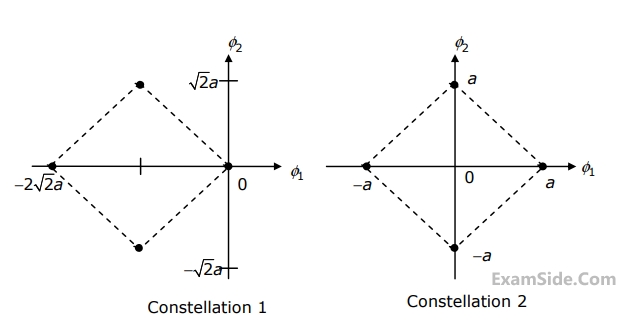
If these constellations are used for digital communications over an AWGN channel, then which of the following statements is true?
9
Two 4-ray signal constellations are shown. It is given that $${\phi _1}$$ and $${\phi _2}$$ constitute an orthonormal basis for the two constellations. Assume that the four symbols in both the constellations are equiprobable. Let $${{{N_0}} \over 2}$$ denote the power spectral density of white Gaussian noise.

The ratio of the average energy of Constellation 1 to the average energy of Constellation 2 is
10
If E denotes expectation, the variance of a random variable X is given by
11
An input to a 6-level quantizer has the probability density function f(X) as shown in the figure. Decision boundaries of the quantizer are chosen so as to maximize the entropy of the quantizer output. It is given that 3 consecutive decision boundaries are ‘-1’, ‘0’ and ‘1’.

Assuming that the reconstruction levels of the quantizer are the mid-points of the decision boundaries, the ratio of signal power to quantization noise power is
12
An input to a 6-level quantizer has the probability density function f(X) as shown in the figure. Decision boundaries of the quantizer are chosen so as to maximize the entropy of the quantizer output. It is given that 3 consecutive decision boundaries are ‘-1’, ‘0’ and ‘1’.

The values of a and b are
13
During transmission over a certain binary communication channel, bit errors occurs independently with probability p. The probability of at most one bit in error in a block of n bits is given by
14
In a Direct sequence CDMA system the chip rate is $$1.2288\,\, \times \,\,{10^6}$$ chips per second. If the processing gain is desired to be at least 100. The data rate
15
The raised cosine pulse p(t) is used for zero ISI in digital communications. The expression for p(t) with unity roll-off factor is given by $$$p(t) = {{\sin \,4\,\pi \,W\,t} \over \matrix{
4\,\pi \,W\,t(1 - 16{W^2}{t^2}) \hfill \cr
\hfill \cr
\hfill \cr} }$$$
The value of p(t) at $$t = {1 \over {4\,W}}$$ is
16
In delta modulation, the slope overload distortion can be reduced by
17
A Hilbert transformer is a
18
The open-loop transfer function of a plant is given as $$G(s) = {1 \over {{s^2} - 1}}.$$ If the plant is operated in a unity feedback configuration, then the lead compensator that can stabilize this control system is
19
A control system with a PD controller is shown in the figure. If the velocity error constant $${K_v} = 1000$$ and the damping ratio $$\zeta = 0.5,$$ then the values of $${K_P}$$ and $${K_D}$$ are
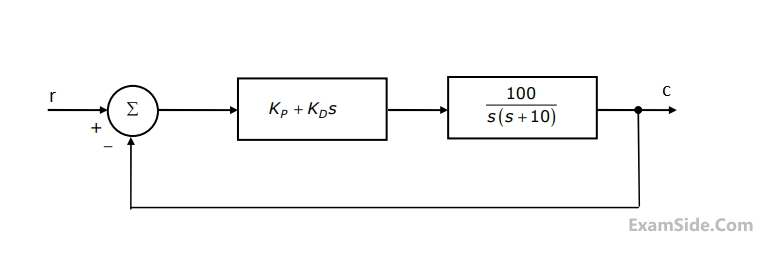
20
The asymptotic Bode plot of a transfer function is shown in the figure. the transfer function G(s) corresponding to this bode plot is

21
If the closed-loop transfer function of a control system is given as
T(s)=$${{s - 5} \over {(s + 2)(s + 3)}},$$ then it is
22
The transfer function of a plant is $$$T\left(s\right)=\frac5{\left(s+5\right)\left(s^2+s+1\right)}$$$ The second-order
approximation of T (s) using dominant pole concept is:
23
The state space representation of a separately excited
DC servo motor dynamics is given as
$$$\left[ {\matrix{
{{{d\omega } \over {dt}}} \cr
{{{d{i_a}} \over {dt}}} \cr
} } \right] = \left[ {\matrix{
{ - 1} & 1 \cr
{ - 1} & { - 10} \cr
} } \right]\left[ {\matrix{
\omega \cr
{{i_a}} \cr
} } \right] + \left[ {\matrix{
0 \cr
{10} \cr
} } \right]u.$$$
Where 'ω' is the speed of the motor, 'ia' is the armature current and u is the armature voltage. The transfer function $${{\omega \left( s \right)} \over {U\left( s \right)}}$$ of the motor is
24
A unity feedback control system has an open-loop transfer function
$$$G\left(s\right)=\frac K{s\left(s^2+7s+12\right)}$$$
The gain K for which s = −1 + j1 will lie on the root locus
of this system is:
25
The frequency response of a linear, time-invariant system is given by $$H\left(f\right)\;=\;\frac5{1\;+\;j10\mathrm{πf}}$$ .The step response of the system is:
26
If the Laplace transform of a signal y(t) is $$Y\left(s\right)\;=\;\frac1{s\left(s\;-\;1\right)}$$ , then its final value is:
27
Consider a linear system whose state space Representation is $$\mathop x\limits^ \bullet \left( t \right) = AX\left( t \right).$$
If the initial state vector of the system is $$x\left( 0 \right) = \left[ {\matrix{
1 \cr
{ - 2} \cr
} } \right],$$
then the system response is $$x\left( t \right) = \left[ {\matrix{
{{e^{ - 2t}}} \cr
{ - 2{e^{ - 2t}}} \cr
} } \right].$$
If the initial state vector of the system changes to $$x\left( 0 \right) = \left[ {\matrix{
1 \cr
{ - 1} \cr
} } \right],$$
then the system response becomes $$x\left( t \right) = \left[ {\matrix{
{{e^{ - t}}} \cr
{ - {e^{ - t}}} \cr
} } \right].$$
The eigen value and eigen vector pairs $$\left( {{\lambda _{i,}}{V_i}} \right)$$ for the system are
28
Consider a linear system whose state space Representation is $$\mathop x\limits^ \bullet \left( t \right) = AX\left( t \right).$$
If the initial state vector of the system is $$x\left( 0 \right) = \left[ {\matrix{
1 \cr
{ - 2} \cr
} } \right],$$
then the system response is $$x\left( t \right) = \left[ {\matrix{
{{e^{ - 2t}}} \cr
{ - 2{e^{ - 2t}}} \cr
} } \right].$$
If the initial state vector of the system changes to $$x\left( 0 \right) = \left[ {\matrix{
1 \cr
{ - 1} \cr
} } \right],$$
then the system response becomes $$x\left( t \right) = \left[ {\matrix{
{{e^{ - t}}} \cr
{ - {e^{ - t}}} \cr
} } \right].$$
The system matrix a is
29
X = 01110 and Y = 11001 are two 5-bit binary numbers represented in two’s
complement format. The sum of X and Y represented in two’s complement format
using 6 bits is:
30
In the digital-to-Analog converter circuit shown in the figure below,
$${V_{R\,}}\, = \,10V$$ and $$R\, = \,10k\Omega $$

The voltage V0 is
31
In the digital-to-Analog converter circuit shown in the figure below,
$${V_{R\,}}\, = \,10V$$ and $$R\, = \,10k\Omega $$

The current i is
32
The following binary values were applied to the X and Y inputs of the NAND latch
shown in the figure in the sequence indicated below: X=0, Y=1; X=0, Y=0; X=1, Y=1. The corresponding stable P, Q outputs will be

33
The circuit diagram of a standard TTL NOT gate is shown in the figure. When $${V_i}$$= 2.5V, the modes of operation of the transistors will be:

34
For the circuit shown, the counter state (Q
1 Q
0) follows the sequence

35
In the following circuit, X is given by

36
The Boolean expression
Y= $$\overline A \,\overline B \,\overline C \,D + \overline A BC\overline D + A\overline {B\,} \overline C \,D + AB\overline C \,\overline D $$
37
The Boolean function Y=AB+CD is to be realized using only 2-input NAND gates. The minimum number of gates required is
38
A plane wave of wavelength $$\lambda $$ is traveling in a direction making an angle $${{{30}^ \circ }}$$ with positive $$x$$-axis and $${{{90}^ \circ }}$$ with positiv $$y$$-axis. The $$\overrightarrow E $$ field of the plane wave can be represented as ($${E_0}$$ is a constant)
39
A load of 50 $$\Omega $$ is connected in shunt in a 2-wire transmission line of $$Z_0$$ = 50 $$\Omega $$ as shown in the Fig. The 2-port scattering parameter matrix (S-matrix) of the shunt element is

40
A $$\lambda /2$$ dipole is kept horizontally at a height of $${\lambda _0}/2$$ above a perfectly conducting infinite ground plane. The radiation pattern in the plane of the dipole ($$\overrightarrow E $$ plane) looks approximately as
41
The $$\mathop E\limits^ \to $$ field in a rectangular waveguide of inner dimensions $$a\,\, \times \,\,b$$ is given by
$$\mathop E\limits^ \to = {{\omega \,\mu } \over {{h^2}}}\,\left( {{\pi \over a}} \right)\,{H_0}\,\sin \,\left( {{{2\,\pi \,x} \over a}} \right)\,\,\sin \,(\omega \,t - \,\beta \,z)\hat y$$,
where $${H_0}$$ is a constant, a and b are the dimensions along the x-axis and the y-axis respectively. The mode of propagation in the waveguide is
42
An air-filled rectangular waveguide has inner dimensions of $$3\,cm\,\, \times \,\,2\,\,cm\,$$. The wave impedance of the $$T{E_{20}}$$ mode of propagation in the waveguide at a frequency of 30 GHz is (free space impedance $$\,{\eta _0} = \,377\,\,\Omega $$)
43
The $$\overrightarrow H $$ field (in A/m) of a plane wave propagating in free space is given by
$$$\overrightarrow H = \widehat x{{5\sqrt 3 } \over {{\eta _0}}}\cos \left( {\omega \,t - \beta \,z} \right) + \widehat y{5 \over {{\eta _0}}}\sin \left( {\omega \,t - \beta \,z + {\pi \over 2}} \right)$$$
The time average power flow density in Watts is
44
If C is a closed curve enclosing a surface S, then the magnetic field intensity $$\overrightarrow H $$, the current density $$\overrightarrow J $$
and the electric flux density $$\overrightarrow D $$ are related by
45
The parallel branches of a 2-wire transmission line are terminated in 100 $$\Omega $$ and 200 $$\Omega $$ resistors as shown in the Fig. The characteristic impedance of the line is $$Z_0$$ = 50 $$\Omega $$ and each section has a length of $$\lambda /4$$. The voltage reflection coefficient $$\Gamma $$ at the input is:

46
In the CMOS inverter circuit shown, if the transconductance parameters of the
NMOS and PMOS transistors are
K
n = K
p = μ
nC
OX$$\frac{W_n}{L_n}$$ = μ
pC
OX$$\frac{W_P}{L_P}$$= 40 μA/V
2 and
their threshold voltages are V
T = 1 V, the current I is:

47
The DC current gain ($$\beta$$) of a BJT is 50. Assuming that the emitter injection
efficiency is 0.995, the base transport factor is:
48
A P+-N junction has a built-in potential of 0.8 V. The depletion layer width at a
reverse bias of 1.2V is 2 µm. For a reverse bias of 7.2 V, the depletion layer
width will be:
49
In a p+n junction diode under reverse bias, the magnitude of electric field is
maximum at
50
The following plot shows a function $$y$$ which varies linearly with $$x$$. The value of the integral $$\,\,{\rm I} = \int\limits_1^2 {y\,dx\,\,} $$

51
If the semi-circular contour D of radius 2 is as shown in the figure, then the value
of the integral $$\oint\limits_D {{1 \over {{s^2} - 1}}} ds$$ is

52
The equation $${x^3} - {x^2} + 4x - 4 = 0\,\,$$ is to be solved using the Newton - Raphson method. If $$x=2$$ taken as the initial approximation of the solution then the next approximation using this method, will be
53
The value of $$\oint\limits_C {{1 \over {\left( {1 + {z^2}} \right)}}} dz$$ where C is the contour $$\,\left| {z - {i \over 2}} \right| = 1$$ is
54
The solution of the differential equation $${k^2}{{{d^2}y} \over {d\,{x^2}}} = y - {y_2}\,\,$$ under the boundary conditions (i) $$y = {y_1}$$ at $$x=0$$ and (ii) $$y = {y_2}$$ at $$x = \propto $$ where $$k$$, $${y_1}$$ and $${y_2}$$ are constant is
55
An examination consists of two papers, paper $$1$$ and paper $$2.$$ The probability of failing in paper $$1$$ is $$0.3$$ and that in paper $$2$$ is $$0.2.$$ Given that a student has failed in paper $$2,$$ the probability of failing in paper $$1$$ is $$0.6.$$ The probability of a student failing in both the papers is
56
If $$E$$ denotes expectation, the variance of a random variable $$X$$ is given by
57
Consider the function $$\,f\left( x \right) = {x^2} - x - 2.\,$$ The maximum value of $$f(x)$$ in the closed interval $$\left[ { - 4,4} \right]\,$$
58
For $$\left| x \right| < < 1,\,\cot \,h\left( x \right)\,\,\,$$ can be approximated as
59
For the function $${e^{ - x}},$$ the linear approximation around $$x=2$$ is
60
$$\mathop {Lim}\limits_{\theta \to 0} {{\sin \left( {\theta /2} \right)} \over \theta }\,\,\,$$ is
61
An 8085 assembly language program is given below.
Line 1: MVI A, B5H
2: MVI B, 0EH
3: XRI 69H
4: ADD B
5: ANI 9BH
6: CPI 9FH
7: STA 3010H
8: HLT
After execution of line of the program, the status of the CY and Z flags will be
62
An 8085 assembly language program is given below.
Line 1: MVI A, B5H
2: MVI B, 0EH
3: XRI 69H
4: ADD B
5: ANI 9BH
6: CPI 9FH
7: STA 3010H
8: HLT
The contents of the accumulator just after execution of the ADD instruction in line 4 will be
63
Two series resonant filters are as shown in the figure. Let the $$3$$-dB bandwidth of Filter $$1$$ be $${B_1}$$ and that of Filter $$2$$ be $${B_2}$$. The value of $${B_1}$$/$${B_2}$$ is


64
In the AC network shown in the figure, the phasor voltage V
AB (in Volts) is:
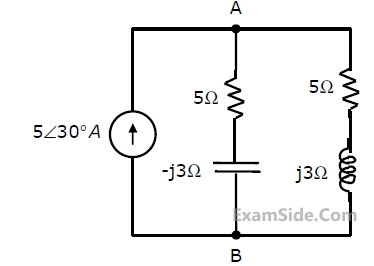
65
The RC circuit shown in the figure is
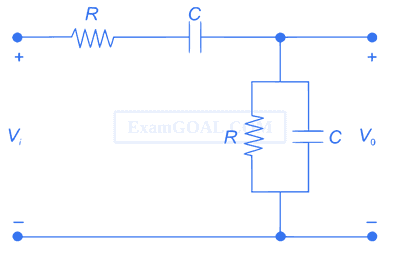
66
In the circuit shown, V
C is 0 volts at t = 0 sec. For t > 0, the capacitor current i
C(t), where t is in seconds, is given by
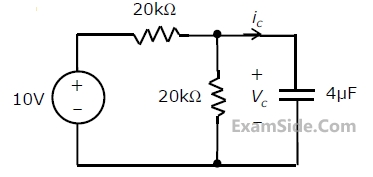
67
For the circuit shown in the figure, the Thevenin voltage and resistance looking
into X-Y are:

68
An independent voltage source in series with an impedance Zs=Rs+jXs delivers a maximum average power to a load impedance ZL when
69
In the following scheme, if the spectrum M(f) of m(t) is as shown, then the spectrum Y(f) of y(t) will be:


70
A Hilbert transformer is a
71
The 3 - dB bandwidth of the low - pass signal $${e^{ - 1}}$$ u(t), where u(t) is the unit step function, is given by
72
The frequency response of a linear, time-invariant system is given by H(f) = $${5 \over {1 + j10\pi f}}$$. The step response of the system is
73
The z-transform X (z) f a sequence x$$\left[ n \right]$$ is given by = $${{0.5} \over {1 - 2{z^{ - 1}}}}$$ . It is given that the region of convergence of X$$\left[ z \right]$$ includes the unit circle. The value of x$$\left[ 0 \right]$$ is
74
A 5-point sequence x [n] is given as x$$\left[ { - 3} \right]$$ =1, x$$\left[ { - 2} \right]$$ =1, x$$\left[ { - 1} \right]$$ =0, x$$\left[ { - 0} \right]$$ = 5, x$$\left[ { - 1} \right]$$ = 1. Let X$$({e^{j\omega }})\,$$ denote the discrete - time Fourier transform of x(n). The value of $$\int\limits_{ - \pi }^\pi x $$
($$({e^{j\omega }})\,$$ d$$\omega $$ is
75
If the Laplace transform of a signal y(t) is $$Y\left( s \right) = {1 \over {s\left( {s - 1} \right)}},$$ then its final value is































